medieval Ireland
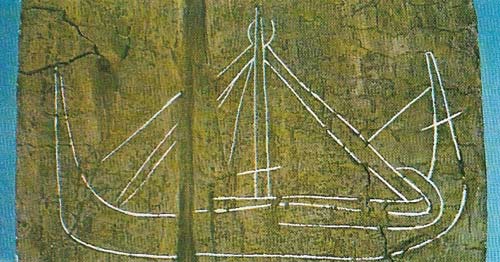
Figure 1. A ship drawn on wood, dating from about 1100, was discovered during excavations in Dublin. Showing clear Viking influence, it offers a rare insight into the type of vessel used by traders of the period.
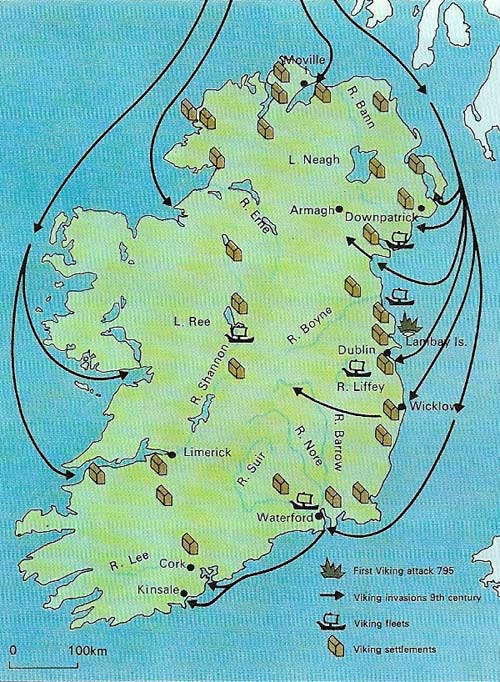
Figure 2. The many Viking descents upon Ireland began in the fateful year of 795. During the next 50 years, Norwegian Vikings made sporadic raids down the west and east coasts, plundering as they went. They also sailed up the Shannon from Limerick in an attempt to gain a foothold in the area of Clonmacnoise and Lough Ree. They established a permanent settlement with the founding of Dublin in 841. In the century after the Danes appeared (c. 850), Viking settlement was extended south of Dublin along the east and south coasts, and owns with Viking names such as Wicklow, Waterford, and Wexford were founded.
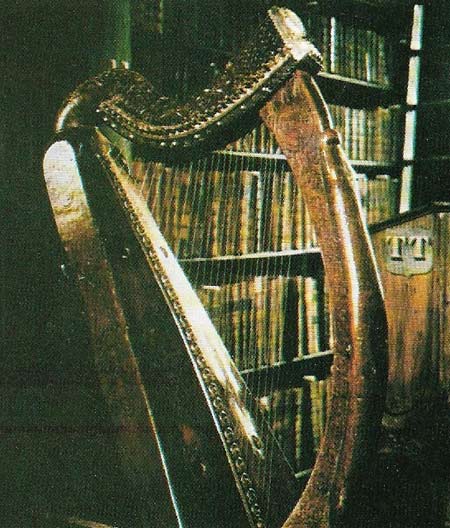
Figure 3. "Brian Boru's harp", traditionally said to have belonged to the Irish high-king, was in fact made about three centuries after his death in 1014. It was Brian who finally subjugated the Viking invaders in Ireland. In 978 Brian inherited his brother's kingdom of Munster and began his avowed conquest of all Ireland. By 984 he controlled Leinster and was supreme over southern Ireland; in 1005 Brian became the first King of Ireland. In 1013 the opposition to his rule – the men of Leinster and the Vikings with support from the Orkneys – united in armed revolt. Brian Boru's army met them at Clontarf in 1014 and emerged victorious, although Brian was slain by the fleeing enemy.
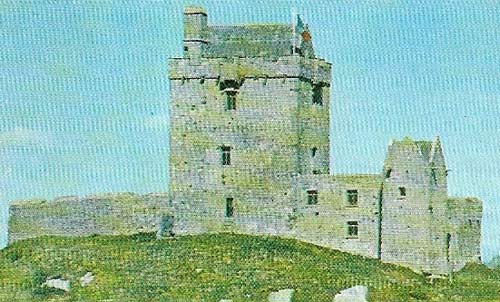
Figure 4. Dunguaire Castle, on Galway Bay, is one of many surviving tower-houses built by native Irish chieftains between 1450 and 1650. The fortifications of these structures were much smaller than those of the 13th-century Norman castles.
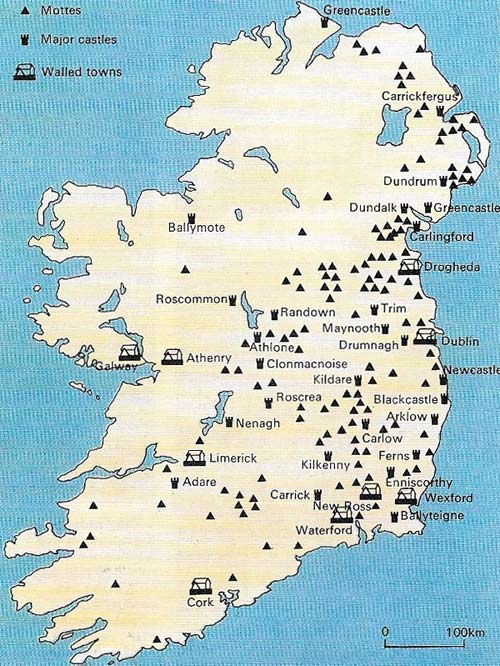
Figure 5. The Normans arrived in Ireland in 1169–1170, and by 1172 were masters not only in Dublin, Wexford, and Waterford, but also of much of Leinster. By submitting to King Henry II of England, many Irish rulers opened the way for Norman colonization and the founding of towns in their lands. Subsequently, Norman barons conquered Meath,eastern Ulster, and large parts of Munster. By the early 13th century, they had overrun most of the areas east of the Shannon. In 1235 they established their dominion over the western province of Connaught, ad 15 years later over Co Clare. By 1250, the greater part of Ireland was in their hands, the northwest alone succeeded in retaining its independence. But by 1400, the Gaelic chieftains had regained many of their lost territories, so that by the 15th century, Anglo-Norman domination was largely confined to the provinces of Leinster and Munster.
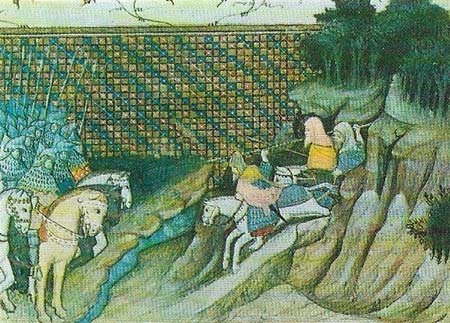
Figure 6. Art McMurrough Kavanagh (right), King of Leinster, confronts the Earl of Gloucester. The Earl had been sent by Richard II to demand McMurrough's submission. But he averred that he was Ireland's king.
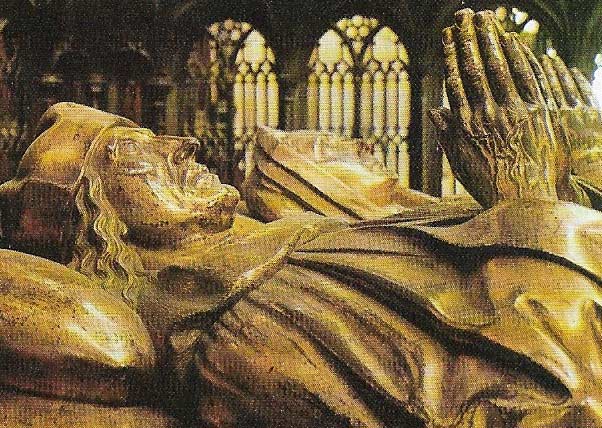
Figure 7. Henry VII (r. 1485–1509), seen here in effigy in Westminster Abbey, imprisoned his viceroy in Ireland, Garret More Fitzgerald, in London fora year while the Irish parliament passed Poyning's Law, in 1494, reasserting English control.
The continual feuding of the petty Irish kings during and after the Viking period eventually brought about English intervention in 1169, and the Norman barons who settled in the country soon controlled the greater part of it. Throughout the period there remained in the west a distinctly Gaelic culture, by which the Anglo-Irish lords of the Midlands in the 14th century came to be affected; the east maintained its ties with England. The great Midland families gradually increased their power and independence from the English king and the eastern English colony, and because of internal strife the English kings were in no position to reassert their control until the end of the 15th century.
The Vikings and the English
By 900 the Vikings had already gained footholds along the Irish coast (Figures 1 and 2), and Dublin had been founded as a trading colony as early as 841. But the Vikings had not shaken the rule of the Irish kings in the interior. The strongest of these proved to be the northern Ui Neill dynasty who defeated the Eoganacht kings of Munster in 908. The Edganacht power in Munster then gradually passed not to the Vikings in Waterford and Limerick but to the Dal Cain of north Munster. The most famous personality of this sept (Irish clan) was Brian Boru (941–1014), who succeeded in becoming king of all Ireland by 1002, and finally destroyed the Viking threat at the Battle of Clontarf in 1014 (Figure 3).
Despite the reputation the Vikings had earned as ruthless plunderers, they contributed much to Irish life. Many of the country's most important maritime towns were founded by them, and from the Vikings the Irish learnt seafaring, and commerce based on coinage and marketplaces.
By the 11th century the great Irish monasteries were in decline, and at a number of synods, culminating in the synod of Kells in 1152, reforms were introduced to bring them into conformity with the rest of Europe. Many older monasteries were not revived by the new division of Ireland into dioceses, but others gained new purpose by adopting Augustinian rule. The foundation of Mellifont by the Cistercians in 1142 kindled a new enthusiasm for monastic life, which was maintained and fostered by the Dominicans and, particularly in the 15th century, by the Franciscans.
Invasion and resurgence
With the extinction of Viking power and the death of Brian Boru, the Irish chieftains were free to pursue unresolved wars for 150 years. In 1166 the ruler of Connaught, Rory O'Connor (1116–1198), became the first king of all Ireland' since 1014, but his glory was brief. Dermot McMurrough (1110–1171), whom he had ousted from Leinster, sought English aid and the English king, Henry II, sent over from Wales a contingent of Norman barons. But the conflict of interests soon ended any arrangement between the Irish and the invaders, despite the brief peace of 1171 and a second compromise, the Treaty of Windsor of 1175. The Irish kings were outraged by Henry's repeatedly granting land to his vassals, but what the English king made over on parchment, the barons were determined to conquer by the sword. One region after another – although not the northwest – fell to the Normans, who were better equipped and better disciplined than the Irish. The invasion of Connaught in 1235 marked the greatest extent of Norman power. The Normans consolidated their newly won territories by building castles, and settlers founded and fortified many inland towns.
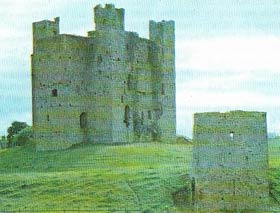 |
| Trim Castle is the largest stone castle in Ireland. Completed by a Norman baron named De Lacey (c. 1200), rim consists of a central tower in the middle of a free-standing area defended by a curtain wall, originally surrounded by water. Shortly after the Normans first landed in Ireland, in 1169–1170, they built strong fortifications to enforce their claims. At first they built mottes – earth mounds shaped like plum puddings – with a wooden tower on top. The massive stone castles were built later. |
Despite the Norman Conquest, Gaelic Ireland survived. It not only retained its laws, language, traditional institutions and culture, but from 1260 began to fight back. The English presence in Ireland was severely shaken by the invasion in 1315 of the brother of the king of Scotland, Edward Bruce (c. 1275–1318), who saw himself as a liberator, and lost only his final battle in 1318. The colonists were further reduced by the onset of the Black Death in 1348. It was in the west, the stronghold of Gaelic power and culture, that the de Burgo family in Connaught began the trend among the Anglo-Irish lords of adopting Irish customs and even language. In 1361 Lionel, Duke of Clarence, the second son of Edward III, having failed to reduce the whole country to his rule, enacted the famous and divisive Statutes of Kilkenny (1366). These in effect outlawed all who adopted "the manners, fashion and language of the Irish enemies".
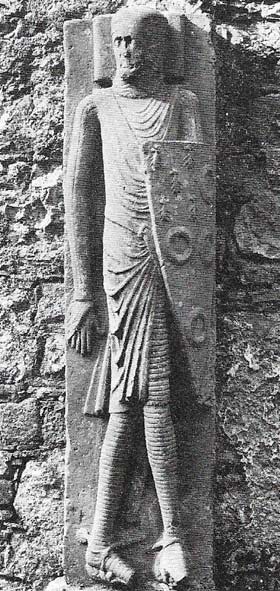 |
| The Normans defeated the native Irish armies, at first, both by superior tactics and by better weapons and armor. This superiority is epitomized in the splendid effigy of a knight at Kilfane, County Kilkenny, shown here. He is clad from head to foot in mail with his body covered by a surcoat (a sleeveless outer garment, worn on top of chain mail). A sheathed sword hangs from a loosely buckled belt slung round his waist, and he wears the early type of rowel spurs, which helps to date the effigy at around 1320. The coat of arms on his triangular shield proclaims him to be a Cantwell, probably "Long Cantwell", who described himself as old in 1319. This was a period when Norman power had already begun to decline in Ireland, and shortly before the Normans changed over to the use of plate armor. |
Virtual independence
Two visits by Richard II in the 1390s were no more than superficially successful (Fig 6). The "Pale", the area remaining English and loyal, became smaller in the fifteenth century, while the virtually independent Anglo-Irish lords of the Midlands expanded their power. In the west, Gaelic chieftains had wrested the land from absentee landlords. First the earls of Ormond, then the earls of Desmond and finally the earls of Kildare were the greatest power in the land; and the greatest of these was Garret More Fitzgerald, the Great Earl of Kildare, who when he died in 1513 was the uncrowned king of Ireland. A parliament at Drogheda in 1460 had declared that Ireland, should be bound only by laws passed by itself. The 1494 parliament under Edward Poynings (1459–1521), the viceroy of Henry VII, revoked this and heralded the Tudor reconquest (Figure 7).
